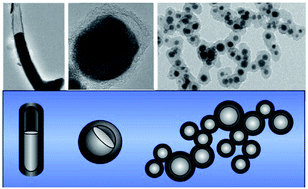Tin–carbon nanomaterial formation in a helium atmosphere during arc-discharge
Abstract
Electric arc discharge is a straightforward and attractive method for the synthesis of nanomaterials with unique properties. When electric arc sputtering of a composite tin–carbon electrode occurs in an inert gas medium, a material is formed that is composed of spherical tin nanoparticles surrounded by a carbon shell. The tin nanoparticles themselves have a core–shell structure with crystalline core and amorphous shell. Such a tin material has four times reduced enthalpy of melting due to the presence of an amorphous phase. However, the processes leading to the formation of nanostructures are not fully understood and require additional research. The collection of material at different distances from the arc discharge allows the identification of the processes leading to the formation of this structure. A mixture of carbon and tin vapours formed by electric arc sputtering forms a fan-shaped jet from the interelectrode gap, the temperature of which decreases with the distance from the discharge axis. Cooling the mixture leads to carbon condensation, and then tin condensation begins to occur on the carbon structures. Agglomeration of carbon-tin clusters and coagulation of tin leads to the formation of liquid tin nanoparticles coated with a carbon shell. The cooling of this material leads to the solidification of the tin and the transformation of the carbon shell. Different rates of cooling of the shell and the core of the tin particle lead to the formation of a core–shell structure with an amorphous shell and a crystalline core.



 Please wait while we load your content...
Please wait while we load your content...